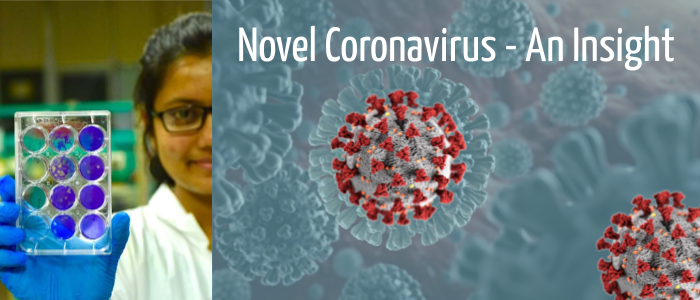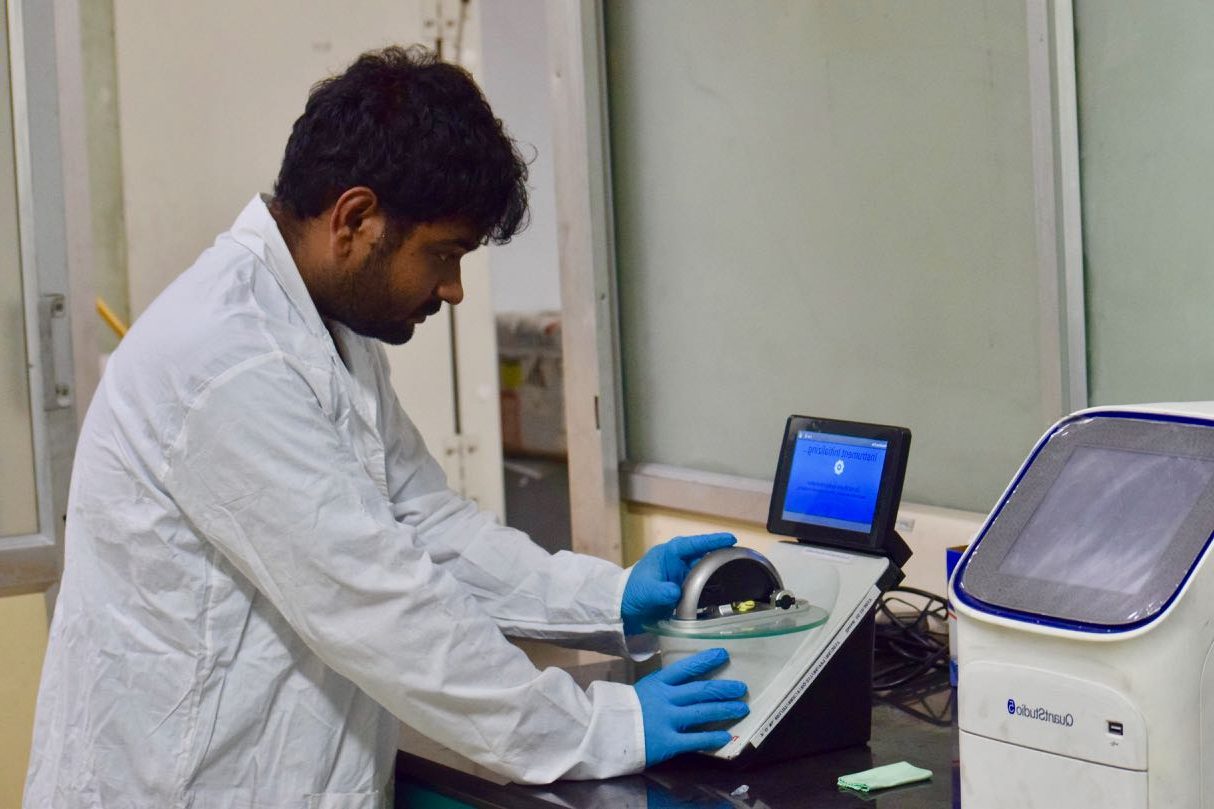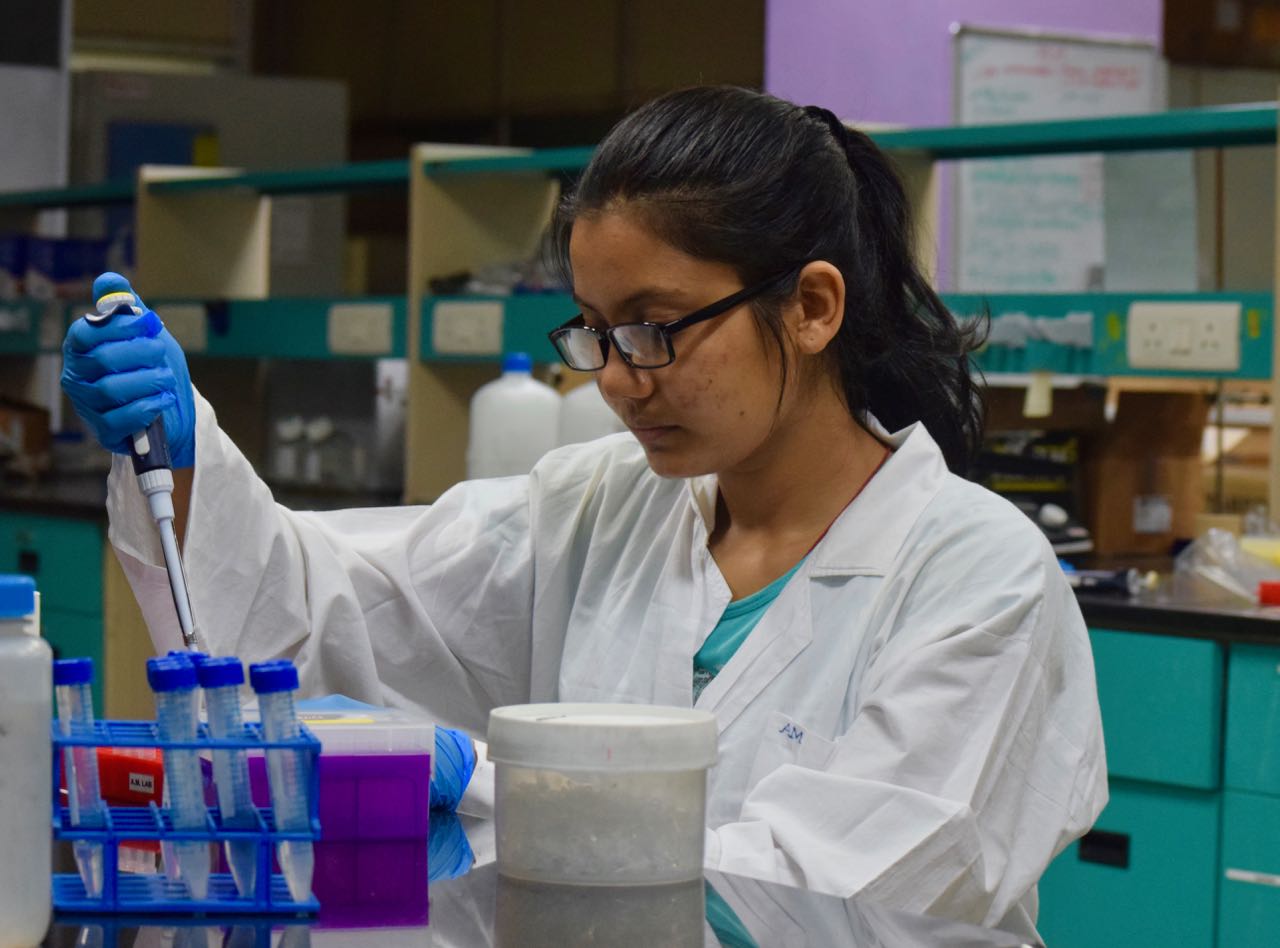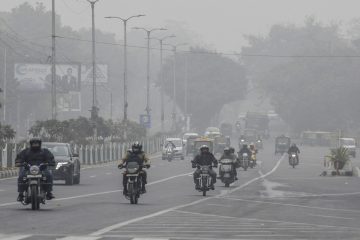
COVID-19 infections in India are nearing 15000 cases while claiming more than 100000 lives globally. Coronaviruses are a virus family causing various diseases, ranging from common cold to those like SARS and MERS which can have a high fatality rate. The novel coronavirus responsible for the COVID-19 pandemic is a new strain and has been named Severe Acute Respiratory Syndrome Coronavirus-2 abbreviated as 19-nCoV or SARS-CoV-2.
 Dr. Arindam Mondal, Assistant Professor at IIT Kharagpur’s School of Bioscience speaks with The Kgp Chronicle regarding frequently asked questions about novel coronavirus. Dr. Mondal leads the Molecular Virology Laboratory in the School of Bioscience where they study human RNA virus replication and host pathogen interaction on molecular detail to develop novel strategies for therapeutic or prophylactic measures. Currently, his lab focuses upon influenza viruses as a model that causes mild to severe respiratory illness.
Dr. Arindam Mondal, Assistant Professor at IIT Kharagpur’s School of Bioscience speaks with The Kgp Chronicle regarding frequently asked questions about novel coronavirus. Dr. Mondal leads the Molecular Virology Laboratory in the School of Bioscience where they study human RNA virus replication and host pathogen interaction on molecular detail to develop novel strategies for therapeutic or prophylactic measures. Currently, his lab focuses upon influenza viruses as a model that causes mild to severe respiratory illness.
1) What is novel coronavirus?
Corona viruses are relatively large viruses ranging from 80-200nm in diameter and having RNA as their genetic material. The outer surface of these viruses contain three surface proteins, namely spike protein (S), membrane protein (M) and Envelope protein (E), while the inner core is constituted of the long genomic RNA enwrapped with multiple copies of viral Nucleoprotein (N). Under the electron microscope, virus particles with spike proteins projecting outwards form a crown-like appearance, leading to its name Corona (corona in Latin is crown). Recently, during December 2019 several cases of pneumonia like illness with unknown cause was reported from the Wuhan province of China. Later it was found that the disease is caused by a virus belonging to the coronavirus family (Coronaviridae). As this specific type of coronavirus has never been found to infect humans, named as novel coronavirus.
2) How common are coronaviruses in causing epidemic in the human history?
Human infecting coronaviruses have been known since the 1960s. Coronaviruses like HCoV-229E and HCoV-OC43, HCoV-NL63 and HCoV-HKU1 cause common cold, mild respiratory infections and flu-like illness. First epidemic outbreak of coronavirus was reported during 2002-2003 caused by Severe Acute Respiratory Syndrome Coronavirus (SARS-CoV). The epidemic originated from the Guangdong Province of China and speeded across 26 countries causing approximately 8000 infections. Subsequently another Coronavirus was reported causing severe respiratory infections in Saudi Arabia and other countries of the Middle east during 2012, named as Middle eastern respiratory syndrome coronavirus or MERS-CoV. For COVID-19, initial cases of “pneumonia of unknown cause” were reported to WHO on December 31st , 2019, from Wuhan in the central Hubei province of China. On January 30th , 2020, the WHO declared the outbreak to be a “Public Health Emergency of International Concern” and recognized it as a pandemic on March 11th , 2020.
3) How is 19-nCoV different from SARS, Ebola, bird and swine flu etc.?
 All of these viruses have drawn public attention due to pandemic or epidemics caused in the recent past, such as the 1918 Spanish flu, the 2009 Swine Flu, the 2014 West African Ebola Virus Disease Epidemic and the 2003 SARS epidemic. While bird and swine flu were caused by different subtypes of influenza viruses, Ebola virus causes hemorrhagic fever. The novel coronavirus, recently identified to have been originated from Wuhan province of China, is closely related to the SARS-CoV (Severe Acute Respiratory Syndrome Coronavirus) that caused the 2002-2003 epidemic, and has thus been alternatively designated as SARS-CoV2. Like the SARS-CoV that originated from bats and got transmitted to humans via an intermediate mammalian host (civets), the SARS-CoV2 seems to have jumped host species from bats to humans, although the existence or identity of the intermediate host is yet to be elucidated. Recent reports have identified pangolins as the possible intermediate host.
All of these viruses have drawn public attention due to pandemic or epidemics caused in the recent past, such as the 1918 Spanish flu, the 2009 Swine Flu, the 2014 West African Ebola Virus Disease Epidemic and the 2003 SARS epidemic. While bird and swine flu were caused by different subtypes of influenza viruses, Ebola virus causes hemorrhagic fever. The novel coronavirus, recently identified to have been originated from Wuhan province of China, is closely related to the SARS-CoV (Severe Acute Respiratory Syndrome Coronavirus) that caused the 2002-2003 epidemic, and has thus been alternatively designated as SARS-CoV2. Like the SARS-CoV that originated from bats and got transmitted to humans via an intermediate mammalian host (civets), the SARS-CoV2 seems to have jumped host species from bats to humans, although the existence or identity of the intermediate host is yet to be elucidated. Recent reports have identified pangolins as the possible intermediate host.
The SARS-CoV-2 strain is similar to the 2009 Swine Flu virus (Influenza A- H1N1) or the seasonal flu virus only in a few aspects, such as transmission via close contact, bodily secretions, respiratory droplets during coughing, sneezing or talking, and fomites and the general symptoms similar to common cold like fever, headache, joint and muscle pain, sore throat, runny nose, a typical dry cough. Early evidence shows that although it is more contagious than the seasonal flu or the Ebola Virus or SARS-CoV that caused epidemics, it is less deadly. While SARS-CoV-2 has a variable case fatality rate of 2% depending on age, geographic location, extent and criteria for testing, the Ebola virus and the SARS-CoV has case fatality rates of 40% and 10% respectively. Several infected individuals developing only mild symptoms or even being asymptomatic at times. Also, the major target age groups for the 2009 swine flu were children between 5 and 20 years of age, for the COVID-19 it is mostly older individuals above 60 years of age and immunocompromised people or people with other complications such as cardiovascular diseases, hypertension or diabetes, much like the SARS-CoV.
https://www.healthline.com/health-news/how-deadly-is-the-coronavirus-compared-to-past-outbreaks
4) What is the activity cycle of the novel coronavirus?
Coronavirus life cycle initiates with the interaction of surface spike proteins with the receptors on host cells. The spike protein of novel SARS-Coronavirus-2 recognizes host ACE2 (Angiotensin Converting Enzyme 2). The spike protein of this virus has significant similarity with two coronavirus strains that infects bats. Hence, it is assumed that the current strain of the novel coronavirus got adapted to infect humans through adaptation in its spike protein. Usually, these kind of novel viral strains, as they are unknown to the humans immune system, may cause severe infection, as happening currently.
Interaction of viral spike protein with the host cell receptors leads to entry of the novel coronavirus into the host cell, followed by uncoating of the outer envelope to release of viral genomic RNA. The viral RNA then utilizes host machinery to synthesize viral proteins. Some of these newly synthesized viral proteins (RNA polymerase/ replicase) then carry out genome replication to produce more copies of progeny viral genomes. Another set of viral proteins then assembles with these progeny viral genomes to generate a large number of progeny virion particles.
5) For how long can this virus remain active on an inorganic surface?
According to recent reports, the new COVID-19 coronavirus can remain stable in aerosols and on various surfaces for several hours, indicating plausibility of aerosol and fomite-borne transmissions. The SARS-CoV2 can remain viable in aerosols for up to 3 hours, up to 4 hours on copper, up to 24 hours on cardboard and for the longest duration of up to 72 hours on plastic and stainless steel, although its infectivity reduces with time. This further highlights the importance of frequent hand sanitization and not touching the face or mouth after touching surfaces.
https://www.nejm.org/doi/pdf/10.1056/NEJMc2004973?articleTools=true
6) Social media is buzzing with the news that the virus would weaken with rise in temperature? Is there any scientific truth in this statement?
In 2002-03 during the SARS epidemic, it was observed that rising temperature and relative humidity did affect the spread of the virus by rapidly declining its viability. In case of COVID-19 pandemic, it has been observed that the virus spread is more rampant in regions of lower temperature (5-11°C) and moderate humidity (50-70%). Experts also noted that the duration of sunlight, which determines the duration of UV exposure to the virus, could be a determining factor as it is UV-sensitive. Some studies under review also suggest, laboratory grown strains of 19-nCoV could be sensitive to extreme heat, but that will not suffice to explain its expected behavior in a pandemic setting, influenced by unpredictable human factors. However the jury is still out on whether the temperature rise and monsoon will be able to significantly subdue the outbreak.
7) Recently India has been getting orders for hydroxychloroquine by countries severely affected by the virus. Is it the ultimate antiviral remedy for novel coronavirus?
 Several antivirals have been identified that could combat the virus by interfering with different stages of the viral life cycle, for example, uncoating inhibitors chloroquine and hydroxychloroquine, replication inhibitor Remdesvir, RNA polymerase inhibitor Favipiravir and so on. Although, specific mechanisms of these antiviral drugs are still under investigation.
Several antivirals have been identified that could combat the virus by interfering with different stages of the viral life cycle, for example, uncoating inhibitors chloroquine and hydroxychloroquine, replication inhibitor Remdesvir, RNA polymerase inhibitor Favipiravir and so on. Although, specific mechanisms of these antiviral drugs are still under investigation.
Dr Arindam Mondal’s group in collaboration with Prof. Suman Chakraborty’s laboratory at the Mechanical Engineering Department, IIT KGP, is currently trying to develop of a paper-strip kit for rapid low-cost diagnostics of COVID-19 infection. This is a portable rapid diagnostic kit, which in combination with a smartphone app, can be deployed at community level in order to carry out extensive detections for the SARS-CoV-2, the causative agent of COVID19.
Prof. Arindam Mondal can be reached at arindam.mondal@iitkgp.ac.in.



